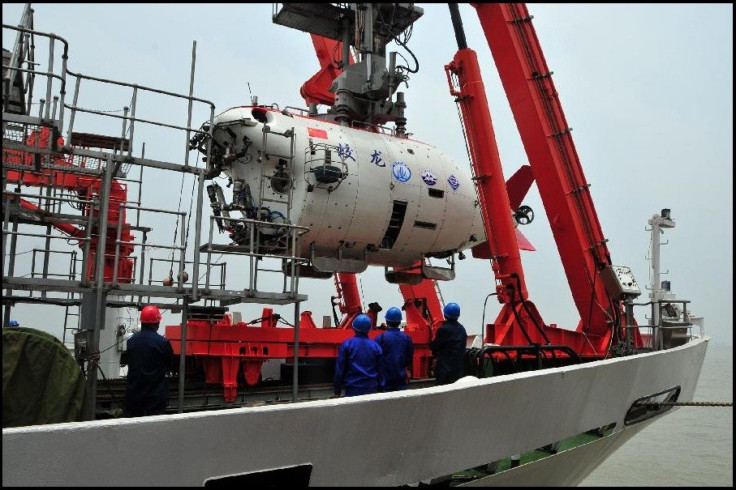What's Behind China's Dive Into The Marianas Trench, The Deepest Place On Earth

Not content with just spending billions on the new space race, China is reaching for the depths of the world's oceans.
Chinese explorers and scientists are now headed off to the Mariana Trench. They'll try a successful dive where James Cameron made history less than three months prior.
China's dive into the deepest place on Earth, expected to take place sometime over the next month, will only reach approximately 23,000 feet (7,000 meters) into the trench, whereas the Hollywood director's craft hit bottom at 35,755 feet (10,898 meters). However, the Chinese vessel, the Jiaolong, named after a mythical sea dragon, will carry three scientists, while Cameron's only contained himself.
The Chinese team will be supported in their dive by a sophisticated oceanographic vessel and a group of 100 technicians, engineers and specialists.
As with China's space program, observers expect advancement in the country's deep-sea exploration capabilities to be driven by three key factors: national prestige, a sense of competition and a desire to advance scientific progress.
In 2010, China joined the U.S., France, Russia and Japan in the very exclusive group of countries capable of operating manned dives past more than 11,480 feet (3,000 meters) below the ocean surface. During a highly publicized dive that took place in the South China Sea that summer, Chinese scientists used the opportunity to plant the country's flag on the bottom of the seafloor, similar to Russia's planting of the flag at the bottom of the Arctic Ocean in 2007.
In summer 2011, the Jiaolong dived past the 16,400 foot (5,000 meters) point in the Pacific Ocean.
China has publicized the vessel as a fully indigenously developed and built submersible. The vessel is not only symbolic of China's growing maritime capabilities, but also its ambition to tap into the resources of the ocean.
Ye Cong, the lead diver on the expedition, noted to Chinese media that the deep sea has amazing resources waiting to be discovered, such as hydrothermal sulfide and manganese nodules.
Other resources include methane hydrates, dense deposits of methane locked inside of ice crystals found on the ocean floor. The United States Geological Survey estimates that the total amount of carbon locked away inside of methane hydrates could be twice as much as the amount that exists in all the world's known fossil fuels.
Japan is currently studying the economic feasibility of conducting limited methane hydrate development off its southern seaboard, near Aichi Prefecture.
For resource- and energy-starved Asian states, further exploration into the depths could reveal valuable energy and mineral sources that could alleviate much of their current constraints. However, analysts expect the technology to economically retrieve or even prospect for such deposits in the deep ocean to be decades away.
If deep-sea mining sounds like the stuff of science fiction, Chinese scientists at least seem interested in exploring those ideas. After all, Jiaolong designer Cui Weicheng, while quick to point out that his vessel is not inferior to Cameron's Deepsea Challenger, says that China can nevertheless learn from the example set by the sci-fi director turned explorer.
© Copyright IBTimes 2025. All rights reserved.





















